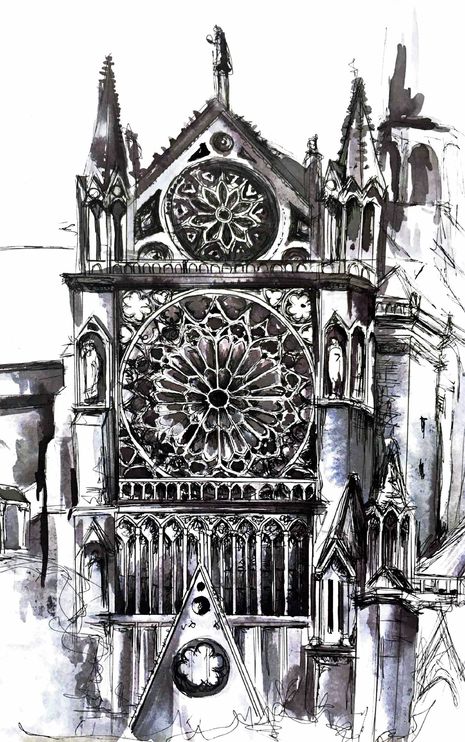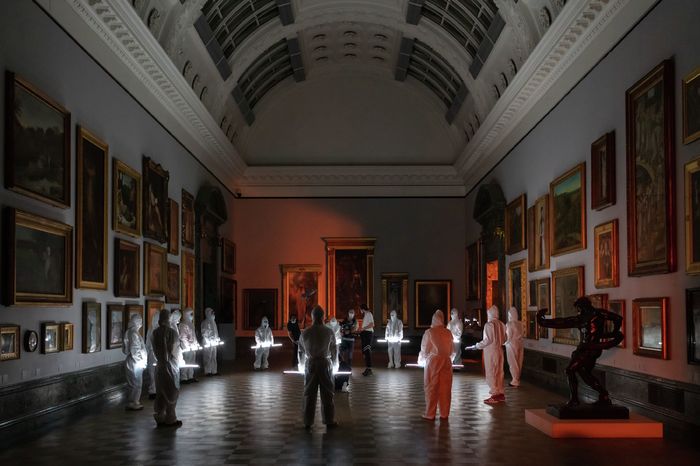This will kill that
Olivia Jacklin looks at how Victor Hugo’s novel, Notre-Dame de Paris undermines its very reason for being written and how objects are unstable sources of human memory

In Victor Hugo’s strange but wonderful novel Notre-Dame de Paris, he writes a chapter entitled ‘This Will Kill That’. This simple sentence – a subject, verb and object – encompasses a problem that has shaped centuries. Historically, architecture has been used to remember events and cultural symbols. Stained glass windows, murals and other architectural techniques were used to inject the characters of civilisations into history. Hugo’s thesis is that people expressed their identity through structures. In Paris, the height of this expression was the creation of the Notre-Dame Cathedral.
However, the invention of the printing press at the turn of the 15th century changed all of this. Hugo saw this invention as an epochal moment, where architecture was no longer civilisation’s primary mode of expression. No longer are symbols of history built into the walls of cathedrals. Instead, they are commemorated on the pages of a book. As the character Frollo laments, ‘small things overcome great ones…the book will kill the building’.
“In many ways, this change brought a new kind of permanence, not of stone which erodes, but rather a permanence of constant replication”
So, this (humanity’s wanting to create history via the printed work) will kill that (humanity’s desire to express itself through architecture). Hugo is not saying that the arrival of the printing press will end all building, but instead that society will no longer use structures as a primary method of expression. It is an irony that the very thing Hugo set out to do in writing Notre-Dame de Paris (saving Notre-Dame) was in fact, killing its very purpose.
The invention of the printing press gave humanity the ability to produce infinitely. In many ways, this change brought a new kind of permanence, not of stone which erodes, but rather a permanence of constant replication. A copy of Notre-Dame de Paris can be reprinted millions of times for millennia to come. In contrast, the Mosaics in the Quire that stands inside St Paul’s Cathedral only need to be destroyed once, and they’re gone forever. The fragility of structures was no more apparent than, during the Notre-Dame fire in 2019, where a country’s legacy was destroyed in hours.
However, this newfound permanence of form comes at a cost. The permanence of books rests on them being read – an unopened book does little to spread cultural symbols. An unopened book is far less part of our consciousness than buildings that have eroded beyond recognition. We are living in the 21st century – an era of mass consumption. We can read Notre-Dame de Paris on our phones. No longer are books outstanding records of the past, but simply products for the amusement of the masses, and in many cases trampled altogether in favour of quicker and more accessible entertainment. In his 1932 book Fiction and the Reading Public, Queenie Leavis bemoans the decline of literacy standards. In doing so, he highlights the very problem that Hugo feared: that we have created a culture where Miltonic writing cannot exist – put simply, books that remember our history don’t sell copies. Society has no desire to write to remember, and it is this that feels like the extraordinary story of our generation – a generation that has fueled the growth of our mast moving economy and has endorsed trends like fast fashion.
“Hugo writes not because he wants his work to be remembered, but rather for the people of Paris to see history as vibrant and needed”
Our technological age is one of rapid changes with often unknown and wide-ranging consequences that are not only disrupting entire industries, but also our culture and our politics. As Arthur Clarke said “Before you become too entranced with gorgeous gadgets and mesmerising video displays, let me remind you that information is not knowledge, knowledge is not wisdom, and wisdom is not foresight. Each grows out of the other, and we need them all.”
Despite this, Hugo’s ‘This Will Kill That’ thesis is not perfect; it is built on the basis that buildings are inherently static and singular. However, buildings that embody history are far from inert. For example, a structure such as Westminster Abbey has expanded, been altered and adapted to become a physical and lasting part of Britain’s history. While we may no longer express the significant historical events of our time through architecture, it is clear that we still clearly value it. In 2019 the National Trust had 5.5 million members, and in 2020 it has spent on average £3 million a week on conservation – a vast sum for a society which, by Hugo’s standard, no longer values its buildings. Perhaps, we recognised the enduring and unwavering nature of our historical landmarks; they have a permanence that is disappearing in the age of technological change. Technologically is fast-moving and unexpected and, in many ways, the antithesis of what a building like Westminster Abbey represents.
So, while Hugo’s bold and insightful comments may have come to fruition, it would be wrong to render architecture redundant. These buildings give us a connection to the past. Hugo writes not because he wants his work to be remembered, but rather for the people of Paris to see history as vibrant and needed. As human expression changes and moves away from the edifice into the printed work and now into the technological age, the structures of humanities past are no less critical.
 News / Cambridge bus strikes continue into new year16 January 2026
News / Cambridge bus strikes continue into new year16 January 2026 News / Local business in trademark battle with Uni over use of ‘Cambridge’17 January 2026
News / Local business in trademark battle with Uni over use of ‘Cambridge’17 January 2026 News / Uni members slam ‘totalitarian’ recommendation to stop vet course 15 January 2026
News / Uni members slam ‘totalitarian’ recommendation to stop vet course 15 January 2026 Interviews / The Cambridge Cupid: what’s the secret to a great date?14 January 2026
Interviews / The Cambridge Cupid: what’s the secret to a great date?14 January 2026 Science / Why smart students keep failing to quit smoking15 January 2026
Science / Why smart students keep failing to quit smoking15 January 2026










